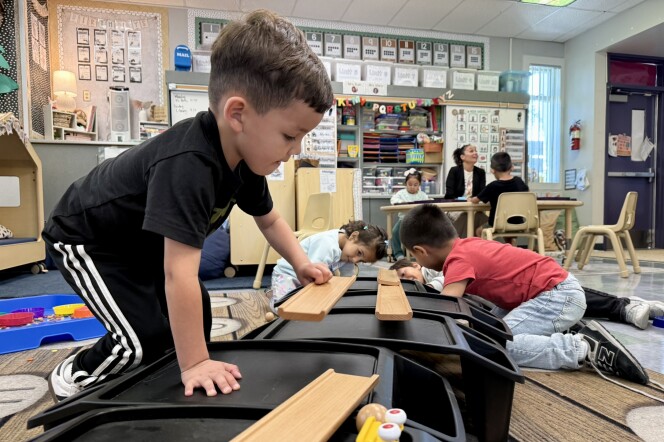With our free press under threat and federal funding for public media gone, your support matters more than ever. Help keep the LAist newsroom strong, become a monthly member or increase your support today.
Tropical Storm Hilary May Have Put The Brakes On Fire Season — For Now

August is just about the time of year when we start to see bigger fires here in Southern California, because vegetation has typically dried out enough that it’s a bit easier to burn than it was just a few months prior.
Case-in-point: the Plant Fire, which broke out north of Santa Barbara on Saturday afternoon.
#PlantIncident Update: Evacuation Orders INCREASED from Aliso Cyn Rd to Cottonwood. pic.twitter.com/N4DUZ3BRhH
— Scott Safechuck (@SBCFireInfo) August 19, 2023
Usually, our hills just keep getting crispier until the fall, when the Santa Ana winds come along and begin to drive our most destructive fires. That is, until rain (hopefully) shows up sometime in November and puts an end to the chaos.
So where does Tropical Storm Hilary leave us, given that we just saw record-setting rain during what’s usually one of our driest months of the year?
Hilary's effect on the coming fire season
Fire season may be delayed in the chaparral and coastal sage scrub communities surrounding many of our cities here in Southern California, but there’s a pretty big caveat.
“What it will delay are your routine topography-dominated fires,” said L.A. County Fire Chief Drew Smith.

Fires are driven across the landscape by dry fuel, topography, and if you have them, winds.

Topography-dominated fires are impacted heavily by features in the landscape, like slopes. For instance, if you have a fire start at the bottom of a canyon, it's going to shoot up the canyon faster than it would downhill, because fire likes moving uphill.
If you have strong winds, then you can have embers from that fire thrown a mile plus away, making it all but unstoppable.
“If you have no wind, no slope, and you just had a flat field of grass a foot tall, it would burn in an ellipse, a donut. But you put a little bit of wind behind it, it’s going to be an egg,” said Smith.
For now, there’s enough moisture to help slow down any topography-dominated fires that start up.

That said, when 70 mph fall winds start blowing with 5% humidity, our landscapes will dry out quickly and easily be able to carry scary blazes.
The story is similar up in our forests, though somewhat more complicated .The ecosystems with bigger fuels (huge trees) at higher elevations are likely to hold on to moisture a bit longer, especially given the heavy snowpack this year.
“I think the chances of us seeing a large campaign fire in the Sierras for this upcoming fall, especially at this point, is extremely low," said Eric Drewitz, meteorologist with the U.S. Forest Service. "I think the best fire potential for this fall will generally be in those lower lying areas where there’s a lot of grasses and fine fuels."
In short: Tropical Storm Hilary helped stave off some blazes, but it’s the Santa Ana winds that drive our most destructive fires. And when they come along, all bets are off until our real rainy season shows up … assuming it does at all.









